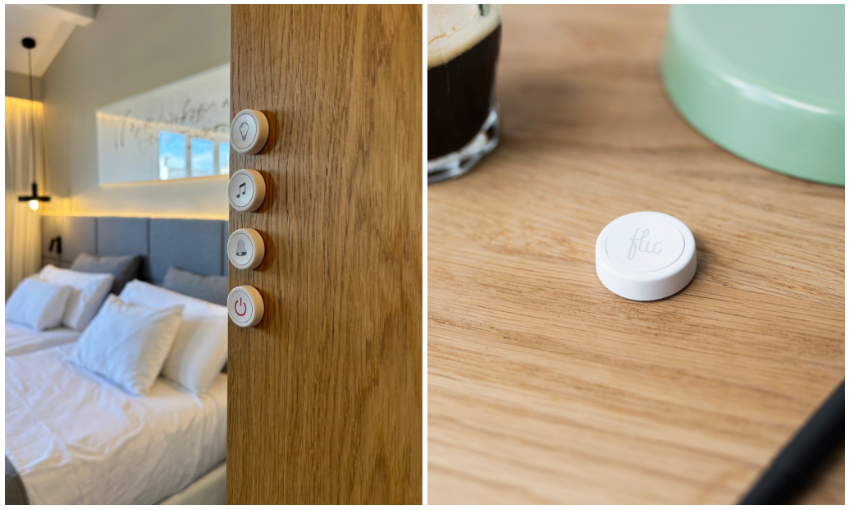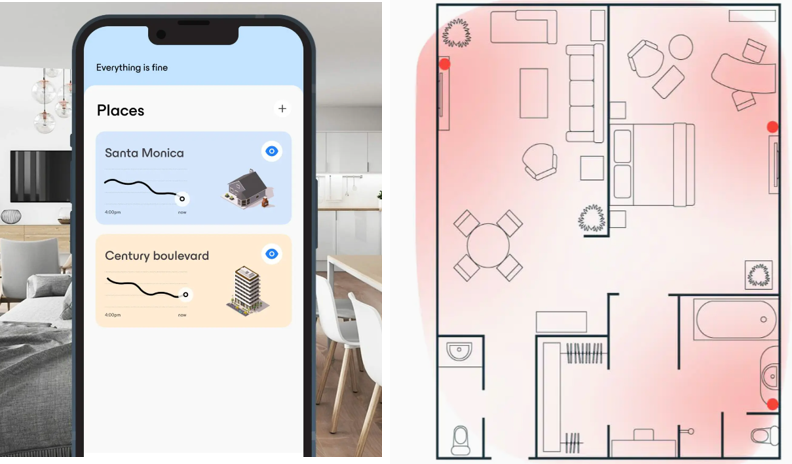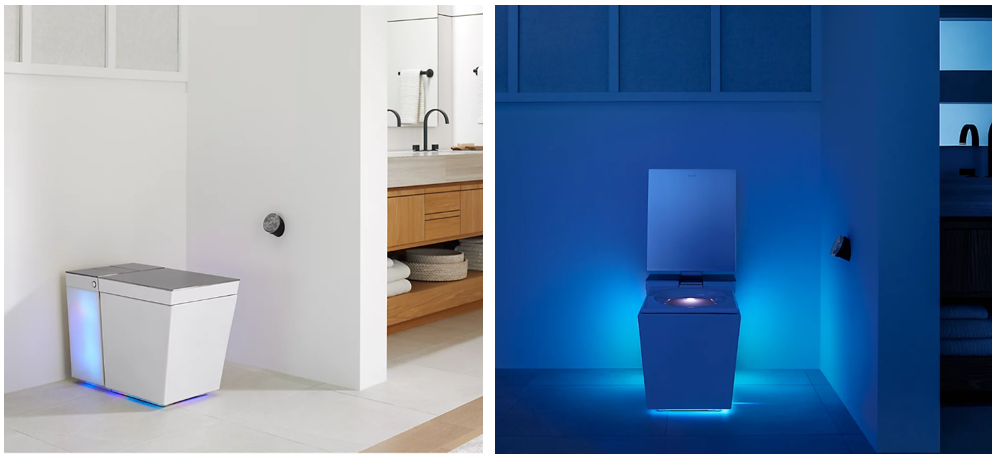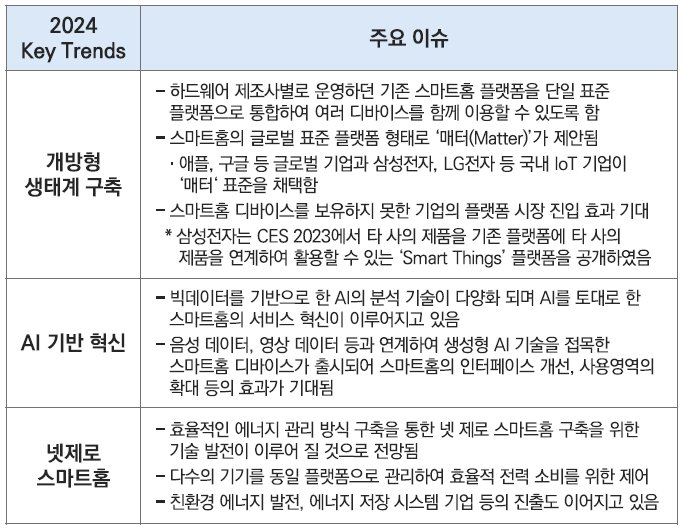CES2024 Smart button, intelligent detection system, smart toilet... Showcasing the future of a colorful smart home
Building an open ecosystem, AI, and net zero are expected to become trends
The rapidly growing smart home market in the United States
The U.S. smart home market is growing rapidly. According to an analysis by market research firm Statista, the size of the U.S. smart home market is approximately $2023 billion in 346 and is expected to reach approximately $2028 billion in 550. The energy management sector in particular is seeing significant growth, thanks to favorable government regulations for installing HVAC systems, tax credits, and Americans' growing interest in lowering their electric bills.
Another important trend in the smart home market is the rapid development of home automation technologies such as gas remote control, heating, cooling, and lighting control. Home automation devices equipped with remote monitoring and control functions are a key component of a smart home. According to an analysis by global market research firm Mordor Intelligence, as of 2023, approximately 44-46% of households with internet access in the United States are expected to install smart thermostats by 2050.
(Unit: US$ billion)
[Source: Statista]
Meanwhile, the '2023 U.S. Consumer Technology Ownership and Market Potential Study' report recently released by the U.S. Consumer Technology Association (CTA), which hosts the Consumer Electronics Show (CES), the world's largest consumer electronics exhibition, also showed that the U.S. smart home market You can check the potential of According to the report, the total number of devices installed in the smart home category in U.S. homes in 2023 is estimated to reach 4 million, and approximately 3260% of U.S. homeowners currently have smart devices such as refrigerators, washing machines, dryers, and dishwashers. It appears that he owns it. This means that 19 million smart devices have been distributed across the United States. Additionally, approximately 3770% of U.S. homeowners have invested in smart home security cameras to enhance their home security measures. In other words, as of 25, as many as 2023 million smart home security cameras are protecting each home across the United States.
| Number of smart home devices installed in U.S. homes | Percentage of U.S. households owning smart home appliances* | Percentage of U.S. households installing smart home security cameras |
| Approximately 4 million units | About 19% of homeowners
(approximately 3770 million units) |
About 25% of homeowners
(approximately 5580 million units) |
Note*: Smart refrigerator, washing machine, dryer, dishwasher, etc.
[Source: CTA]
The above statistics show that having smart home technology is becoming increasingly common in American homes. This trend, coupled with technological advancements and responses to the climate crisis, is rapidly reshaping the way we interact with our homes.
CES 2024The future of smart homes seen in
CES is well known for introducing innovative ICT convergence technology products every year. At CES 2023 held last year, ▲ various hubs that are integrated with smart devices to help manage smart homes such as lighting, heating, and security systems; ▲ a smart home security system using high-resolution cameras, motion sensors, facial recognition technology, etc. , ▲ smart home appliances that provide convenience by learning the user's habits or surrounding environment, ▲ voice recognition technology that improves the interactivity and convenience of smart homes by controlling smart devices and obtaining information through voice commands. received. So, what smart home technologies will be showcased at CES 2024?
1) Smart home integrated with buttons
Recently, in the American smart home market, smart buttons have emerged as a key device that simplifies daily tasks and automates routines. When choosing the right smart button, factors such as compatibility with existing smart home systems, functionality, ease of use, design, and customizability are important. The smart button proposed by Flic is compatible with HomeKit, Alexa, etc. This product is compatible with major smart home ecosystems. Flick's smart button is expected to have Matter compatibility by the second quarter of 2024.
[Source: Flic]
The buttons developed by Flick can control lights, blinds, speakers, security systems, and even robot vacuum cleaners. It operates independently through the Flick app, and when used with Flick Hub, its range is expanded and accessibility is improved. Because it has a custom action function, you can control multiple devices and perform various functions with a single button, such as turning on the lights by pressing the button once or playing music by pressing the button twice. Because it is small and easy to carry, it can be placed anywhere in the house or the user can carry it around and use it whenever they want. In this way, through Flick, users can easily perform desired tasks without using complex smart home apps, allowing users to experience smart home technology more simply and conveniently.
2) Convenience in life with an intelligent sensing platform
Nami is introducing ‘Wi-Fi Presence Sensing’ technology, an intelligent sensing platform that detects the location and motion of a target using Wi-Fi signals. Through this technology, Nami detects the movements of not only users, but also pets, robot vacuum cleaners, and intruders, and provides various conveniences accordingly. For example, when a user enters or leaves the house, it can automatically turn on lights or air conditioning, and when it detects the movement of a stranger at the entrance, it automatically activates the security system. In addition, if gas or smoke is detected, it notifies the user to prevent a fire, and in the case of an elderly person who falls indoors or whose movement is not detected for a long time, it is possible to request help from the medical system through Nami.
[Source: Nami]
3) Redefine the bathroom smartly
Kohler is the largest company in the United States that manufactures faucets and sanitary ware used in kitchens, bathrooms, and toilets. Kohler is known for its long history and traditional design, but it has recently been pioneering a new path for the smart home of the future by incorporating cutting-edge technology into its products. This CES 2024 is also attracting attention by introducing innovative smart home solutions.
[Source: Kohler]
What stands out is the Numi 2.0 smart toilet seat. The toilet seat of the future proposed by Kohler is armed with modern and innovative design and technology. Users of Numi 2.0 can control the bathroom environment and adjust water temperature, water pressure, and toilet seat temperature through voice commands or the touch screen. By applying hands-free technology, the toilet seat lid opens automatically when the user approaches, and the toilet seat is automatically sterilized and cleaned before the user uses it. Additionally, Numi 2.0 is equipped with an odor removal function, allowing you to maintain a more comfortable bathroom environment.
Numi 2.0 also provides users with an experience that will satisfy their five senses. Numi 2.0 is equipped with a device that can wirelessly charge a smartphone and can also play music through the built-in speaker. Additionally, various LED lighting options are provided inside the toilet seat, so users can set specific lighting depending on the mood. This technical innovation of Numi 2.0 makes smart homes more convenient and modern, so it is expected to transform the bathroom from a simply functional space into a comfortable and innovative space.
implication
Global consulting group KPMG predicted that in the smart home industry in 2024, the establishment of an open ecosystem where devices from various manufacturers represented by ‘Matter’, AI, and net zero will become established as trends. ‘Matter’ refers to a new standard that unifies the industry to increase compatibility and improve interoperability between smart home products in smart home systems. Currently, many devices used in the smart home industry are incompatible with each other, but as the industry adopts more Matter, smart homes will become more interconnected and consumers will be able to receive an integrated experience.
[Source: Samjeong KPMG]
Meanwhile, Mr. R, an engineer in charge of IoT interface development at Google's Nest Lab, said in an interview with the Trade Center, “Generative AI, which attracted attention as the most innovative technology in 2023, is expected to become increasingly common in the smart home field. “As smart home devices become more diverse, we expect to discover more innovative artificial intelligence technology in security devices and cooking appliances, and users are expected to experience increased satisfaction in terms of more precise and personalized experiences and energy efficiency,” he said. . In summary, a smart home is a more intelligent and convenient space thanks to artificial intelligence innovation, a space that creates new business opportunities through the expansion of an open ecosystem, and a space that maximizes energy efficiency and minimizes carbon emissions in accordance with the net-zero energy policy. It is expected to be reborn as a space.








